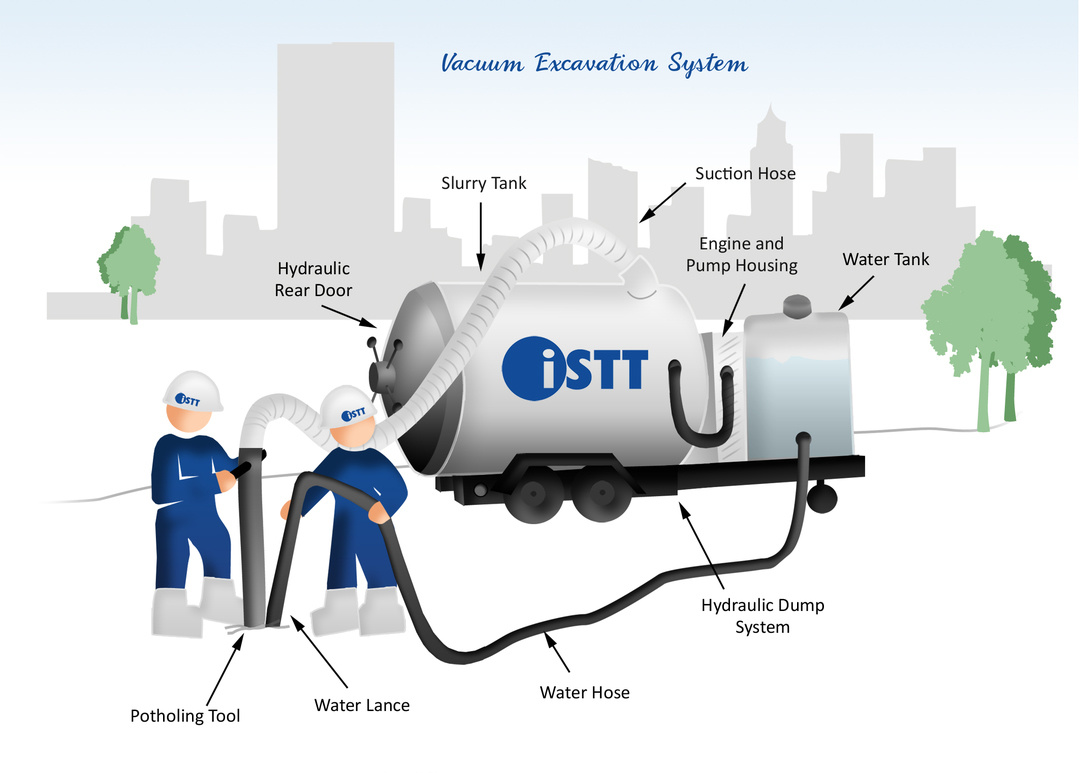- Potholing
-
Once the approximate location of an underground asset has been identified to a sufficient degree, its exact position, depth, diameter, utility type, material, etc. can be determined using potholing techniques. Access to a pipe at reasonable depth can be provided using small diameter holes from the surface – created by “soft” excavation techniques using vacuum excavation. These holes may be 0.5 m diameter or less and the soil excavation techniques may use air or water lances to loosen the soil prior to vacuuming it out of the hole. When combined with careful road pavement cutting techniques (such as the “keyhole” technology pioneered by the gas industry), the damage to a road pavement and the disruption to traffic is minimized.
Vacuum excavation systems combine pressurized jetting and suction equipment to support a number of construction and trenchless applications. These systems come in a wide variety of sizes. They may be self propelled or mounted on trailers. The basic components of a vacuum excavation system include a slurry or debris tank capable of storing spoils until they are discharged off-site; a suction hose and pump to vacuum spoils from the earth or from pits and reservoirs to a slurry tank; and an engine to power the system components. If the system includes hydro excavation capabilities, water tanks, pumps, water lines, and jetting tools such as wands and water lances are also needed.

Hydro and/or compressed air jets and vacuums may be employed to remove debris, and clean clogged utilities. During preconstruction, vacuum excavation systems may pothole to expose existing utilities where use of mechanical excavators, backhoes or boring equipment could risk damage to utilities. During construction and post construction, vacuums may be used to remove spoils associated with directional drilling and tunneling operations. In addition, vacuums are sometimes used to support hand tunneling and auger boring operations where the vacuum hose is extended to the face of the tunnel to remove spoils from inside the casing. Jetting and vacuum features of vacuum excavation systems may also be used to create shallow trenches for the installation of cables and utility services.
The International Society for Trenchless Technology
 Cart
Cart
